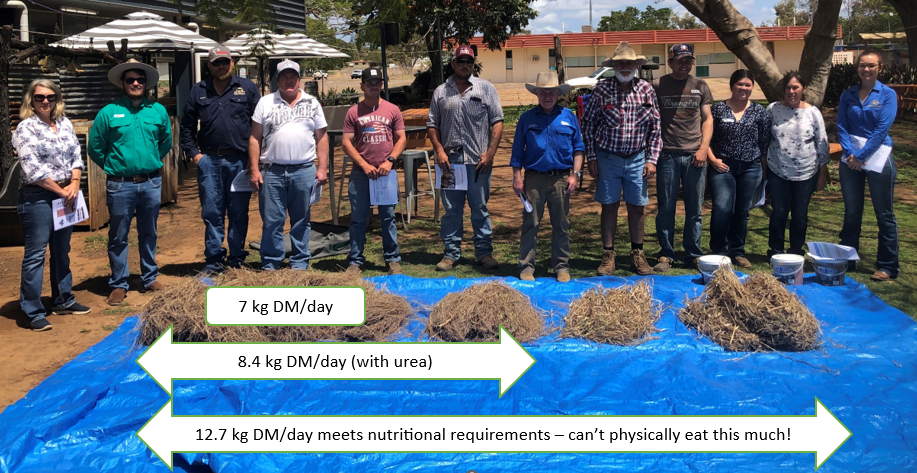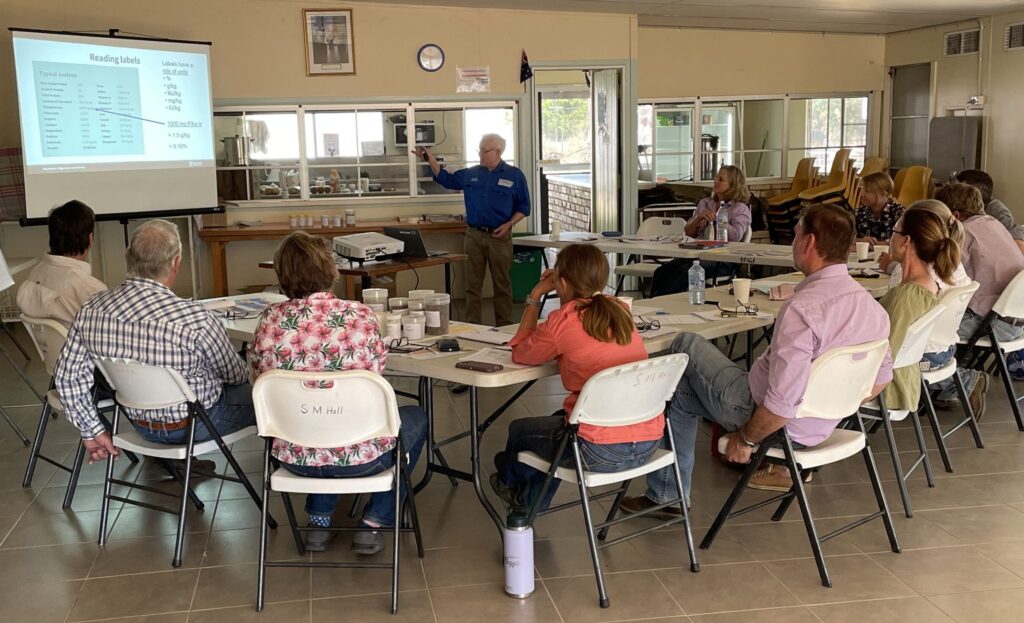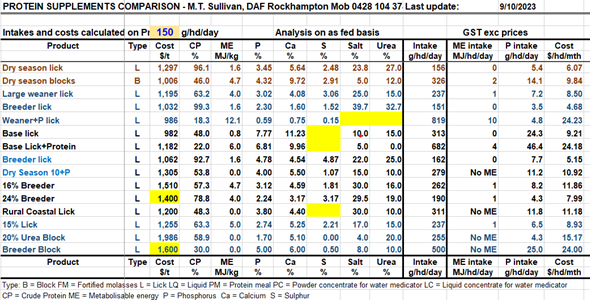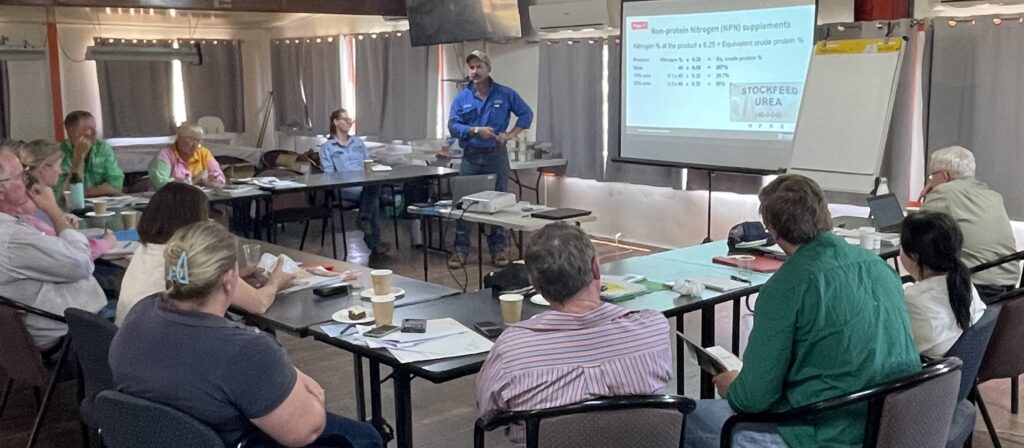Navigating nutrition in the dry season
Forty-eight producers from across the Burdekin catchment received valuable guidance on navigating nutrition, during a series of workshops in late 2023. Locations included Pentland, Greenvale, Belyando, Alpha and Charters Towers, with an online option also provided. Special thanks to Tim and Alison Kirkwood for hosting the Belyando day at Disney.
The days were run by the DAF beef extension team with staff from Rockhampton, Mackay, Townsville and Charters Towers centres, combining to deliver timely information on the annual problem faced by northern breeding properties of maintaining breeder body condition on a below maintenance diet of dry season pasture.
Workshop discussion on tackling this problem identified several key management strategies:
Having enough pasture
Cows need to consume a large amount of pasture, ranging from 2.4% of their body weight early in the wet season, to 1.5% at the end of the dry season:
- For a 450kg cow at the end of the dry, that’s 7kg of dry matter per day (a pretty big pile of grass)
- By adding a urea based supplement, she can eat around another 1.4kgs, a total of 8.4kgs of dry matter
- In late pregnancy or once lactating, she would need to eat around 12.7kgs to provide the protein and energy she requires – a physical impossibility. So, its all about managing the gap.

Weaning
Weaning is the most important tool after stocking rate for managing breeder body condition. Weaning reduces a cow’s energy requirements by half. The weight loss saving from weaning is twice what can be achieved with dry season protein supplements.
Plugging the protein gap with a cost-effective supplement
Dry season urea supplements increase dry matter intake by 10-30% and the higher protein and energy intake from the increased pasture consumption reduces weight loss. The DAF developed FeedCalc tool was used to compare cost-effectiveness across a range of supplements.

Assessing the cost benefit of an energy supplement
If the season really falls apart (as it did for a lot of people in 2023) assessing the cost benefit of feeding an energy supplement can be an option. While the cheapest energy a cow can access is the fat on her back, there can be times when purchasing an energy supplement is an option to be considered.
At each workshop, attendees shared details of their current supplements (loose lick, blocks or fortified molasses) and intakes. Using the FeedCalc tool, the team was able to provide feedback to each business on:
- The targeted intake of supplement required to provide adequate protein, energy or phosphorus for the class of cattle being fed (the example below looks at supplying 150g of protein to a breeder)
- The variation in cost of supplying the targeted intake across a range of products
- When intakes were known, the FeedCalc tool calculated if animals were under or overconsuming or hitting the sweet spot of cost effectively filling the gap.

The workshops provided a valuable mentoring opportunity for newer DAF staff to learn from senior extension officers Mick Sullivan and Jim Fletcher, who are old hands at navigating the topic of nutrition.
Feedback from attendees highlighted the workshops’ practical value and the ability to apply newfound knowledge directly to their management practices:
‘The importance of understanding the components of different licks, how to read labels and how to implement this in our practice & going forward.’
‘I found today very helpful & on an easy to understand level. I appreciated the hands on approach & the willingness of the team members to be available to help. Thanks heaps! Good cake too!’ 😊
If you are interested in hosting a Sensible Supplementation workshop for your region, let us know. Hosting properties can receive free NIRS faecal testing which provides timely information on your cattle’s requirements, allowing you to get the most from your investment in supplementation.

For a more in-depth training opportunity on nutrition and supplementation, check out what’s on offer at the next Nutrition Edge workshop in Emerald (27-29 February) or visit FutureBeef events calendar.
Written by Lara Landsberg and Jo Gangemi, Department of Agriculture and Fisheries (DAF)